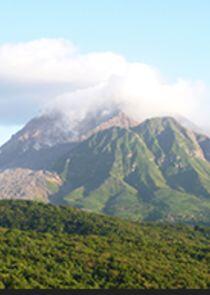Recent Episodes
| Episode | Name | Airdate |
|---|---|---|
| S01E02 | Iceland | May 9, 2017 |
| S01E01 | Montserrat | May 2, 2017 |
Frequently Asked Questions Warning: Spoilers
When did the TV show 'Living with Volcanoes' premiere?
The TV show 'Living with Volcanoes' premiered on October 15, 2017.
Who are the main characters in 'Living with Volcanoes'?
The main characters in 'Living with Volcanoes' include geologists, volcanologists, and scientists who study and live among volcanoes.
What is the premise of 'Living with Volcanoes'?
'Living with Volcanoes' explores the lives of scientists and researchers who study and live alongside active volcanoes around the world. The show delves into their daily challenges, discoveries, and the risks they face.
Which countries are featured in 'Living with Volcanoes'?
'Living with Volcanoes' features various countries around the world, including Iceland, Italy, Japan, Indonesia, and many more, where active volcanoes are present.
How do the scientists in 'Living with Volcanoes' monitor volcanic activity?
The scientists in 'Living with Volcanoes' monitor volcanic activity using a combination of techniques, including seismology, gas measurements, thermal imaging, and ground deformation monitoring.
What challenges do the scientists face while living near volcanoes?
The scientists in 'Living with Volcanoes' face numerous challenges, such as unpredictable eruptions, toxic gases, landslides, volcanic explosions, and harsh living conditions, which they must navigate and overcome to conduct their research.
How do the scientists prepare for potential volcanic eruptions in 'Living with Volcanoes'?
In 'Living with Volcanoes,' the scientists prepare for potential volcanic eruptions by establishing evacuation plans, monitoring volcanic activity, and educating local communities about the risks and safety measures to take in case of an eruption.
What are some of the most dangerous volcanoes featured in 'Living with Volcanoes'?
'Living with Volcanoes' showcases some of the most dangerous volcanoes in the world, including Mount Vesuvius in Italy, Mount Merapi in Indonesia, Mount St. Helens in the United States, and Eyjafjallaj\u00f6kull in Iceland.
How do the scientists in 'Living with Volcanoes' contribute to our understanding of volcanic eruptions?
The scientists in 'Living with Volcanoes' contribute to our understanding of volcanic eruptions by collecting data, analyzing volcanic behavior, and developing early warning systems, which help mitigate the risks and improve our ability to predict eruptions.
What are some of the notable discoveries made by the scientists in 'Living with Volcanoes'?
In 'Living with Volcanoes,' the scientists make notable discoveries, such as identifying new volcanic vents, studying volcanic gases to understand eruption mechanisms, and discovering new species that thrive in volcanic environments.
How do the scientists ensure their safety while working near active volcanoes in 'Living with Volcanoes'?
The scientists ensure their safety in 'Living with Volcanoes' by wearing protective gear, following strict protocols, and constantly monitoring volcanic activity to make informed decisions about their proximity to the volcano.
What role do volcanoes play in shaping the Earth's landscape, as shown in 'Living with Volcanoes'?
'Living with Volcanoes' highlights the significant role of volcanoes in shaping the Earth's landscape through volcanic eruptions, lava flows, ash deposits, and the creation of new landforms, such as islands and mountains.
How do the scientists communicate with the local communities living near active volcanoes in 'Living with Volcanoes'?
The scientists in 'Living with Volcanoes' communicate with local communities by organizing workshops, public meetings, and educational campaigns to raise awareness about volcanic hazards, evacuation plans, and safety measures.
What techniques do the scientists use to study the internal structure of volcanoes in 'Living with Volcanoes'?
In 'Living with Volcanoes,' the scientists use various techniques, such as ground-penetrating radar, seismic tomography, and satellite imagery, to study the internal structure of volcanoes and understand their magma chambers and plumbing systems.
How do the scientists in 'Living with Volcanoes' predict volcanic eruptions?
The scientists in 'Living with Volcanoes' predict volcanic eruptions by monitoring changes in volcanic activity, including seismicity, gas emissions, ground deformation, and changes in volcanic vents, which can indicate an imminent eruption.
What are some of the safety measures recommended by the scientists in 'Living with Volcanoes' during volcanic eruptions?
'Living with Volcanoes' emphasizes safety measures during volcanic eruptions, such as following evacuation orders, staying away from ashfall areas, wearing protective masks, and seeking shelter in designated safe zones to minimize exposure to volcanic hazards.
Recently Updated Shows
Recently updated shows that might be of your interest.
* This is an affiliate link. If you click and purchase, we will receive a commission from the provider. This will not incur any additional costs for you and you will support our project. We thank you for your support!







